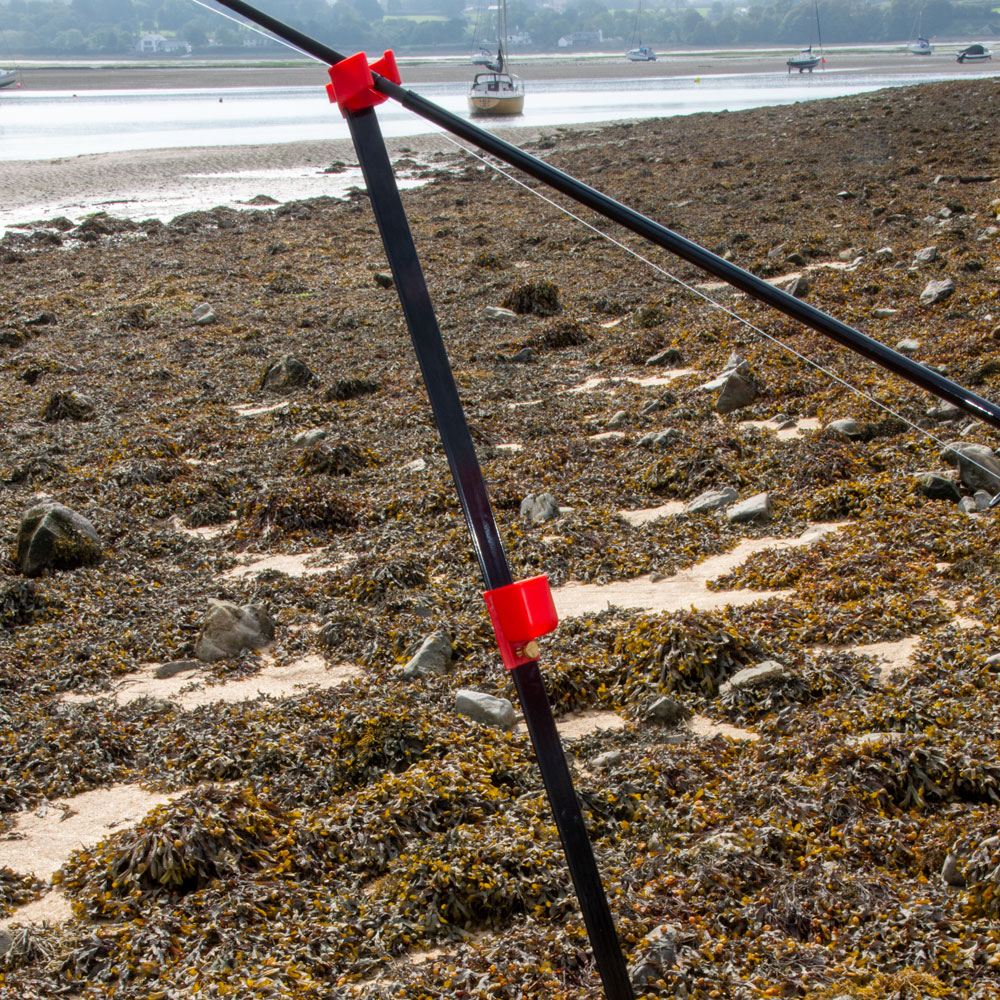Flounder are available all year round from both estuaries and from open surf beaches, giving consistent sport, even at times when other fish are few and far between. The biggest flounder show in the autumn to late winter period, when the biggest flounder move out of the estuaries. They then stay resident on the beaches for a few weeks, feeding up before moving away to deeper water for spawning. The same tackle covers you all year round, and here's how to maximise your chances with one of the angler’s favourite fish.
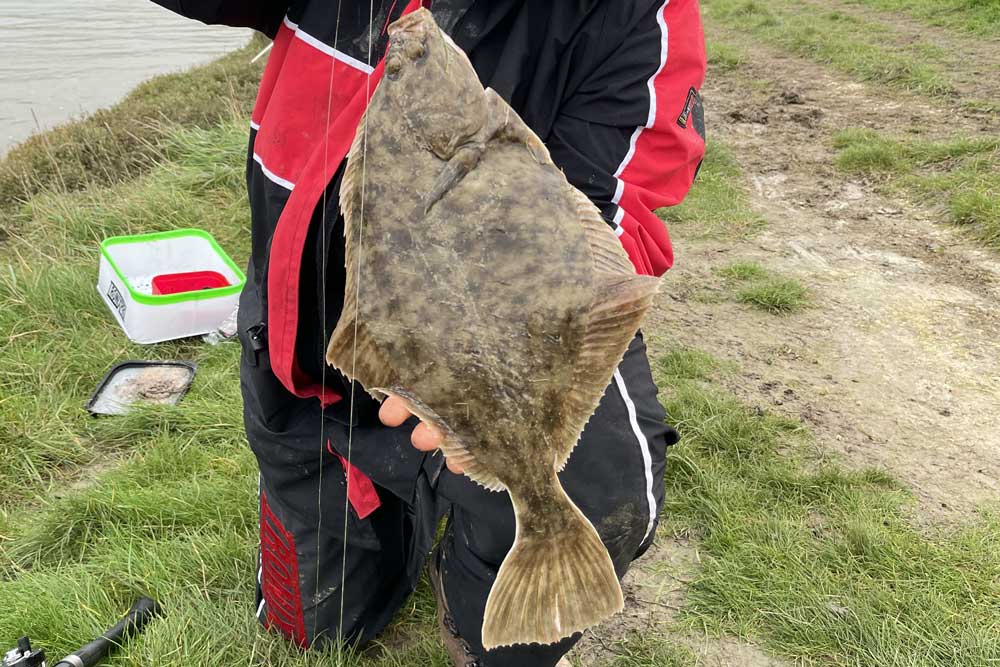
Rods
The all-round rod for general estuary and close to medium range surf fishing would be a 2-4oz bass rod with a length of 11ft 6ins. One with a supple tip and gradually increasing power down through the mid-section with a stiffish butt is ideal, being perfect for easy medium to long-range casting when surf fishing yet retaining good bite detection.
Getting more popular are the longer 12ft rods designed with a very supple tip, or a series of three tips with soft, middle and heavy power ratings. These are designed for fishing with a fixed-spool reel. They are good for fishing the shallower surf beaches with lighter leads such as 2ozs in calm sea conditions. They have the power to cast the bigger 3 to 4oz leads casting across the wider main estuary channels and when distance is needed on a very shallow surf beach.
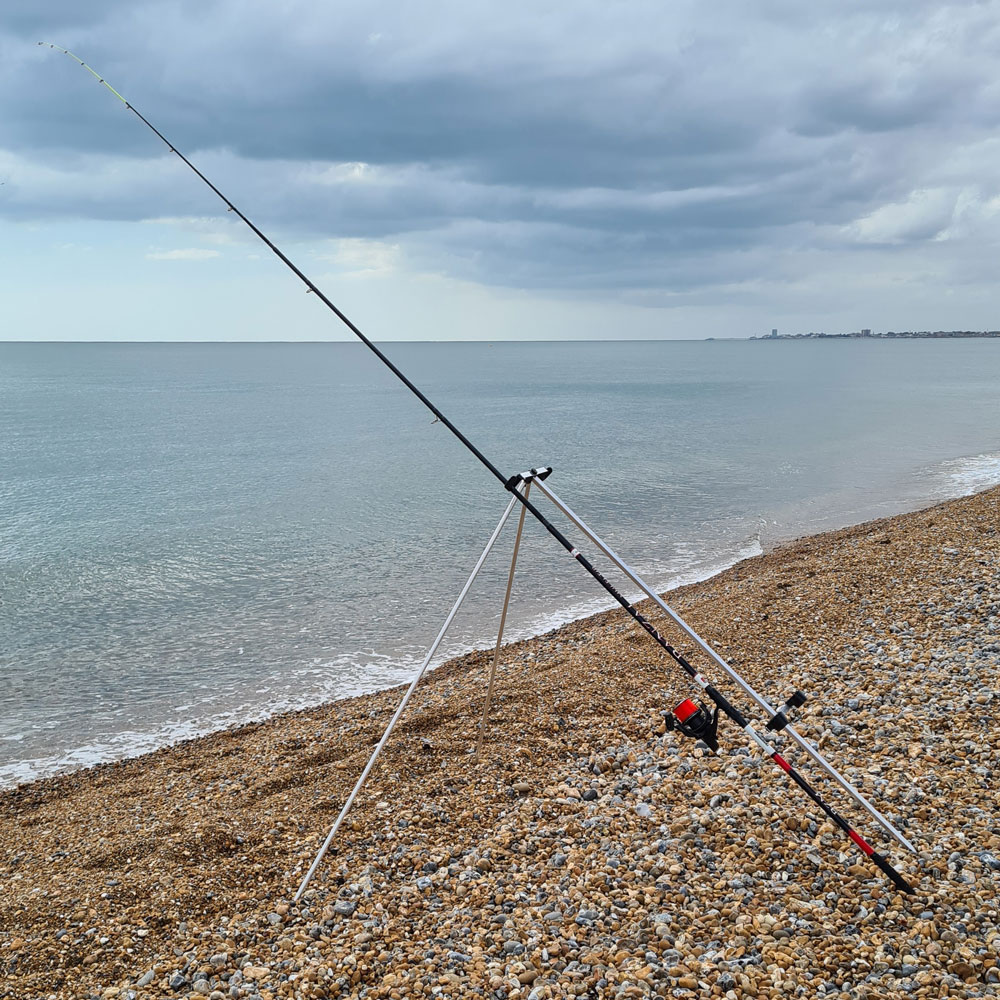
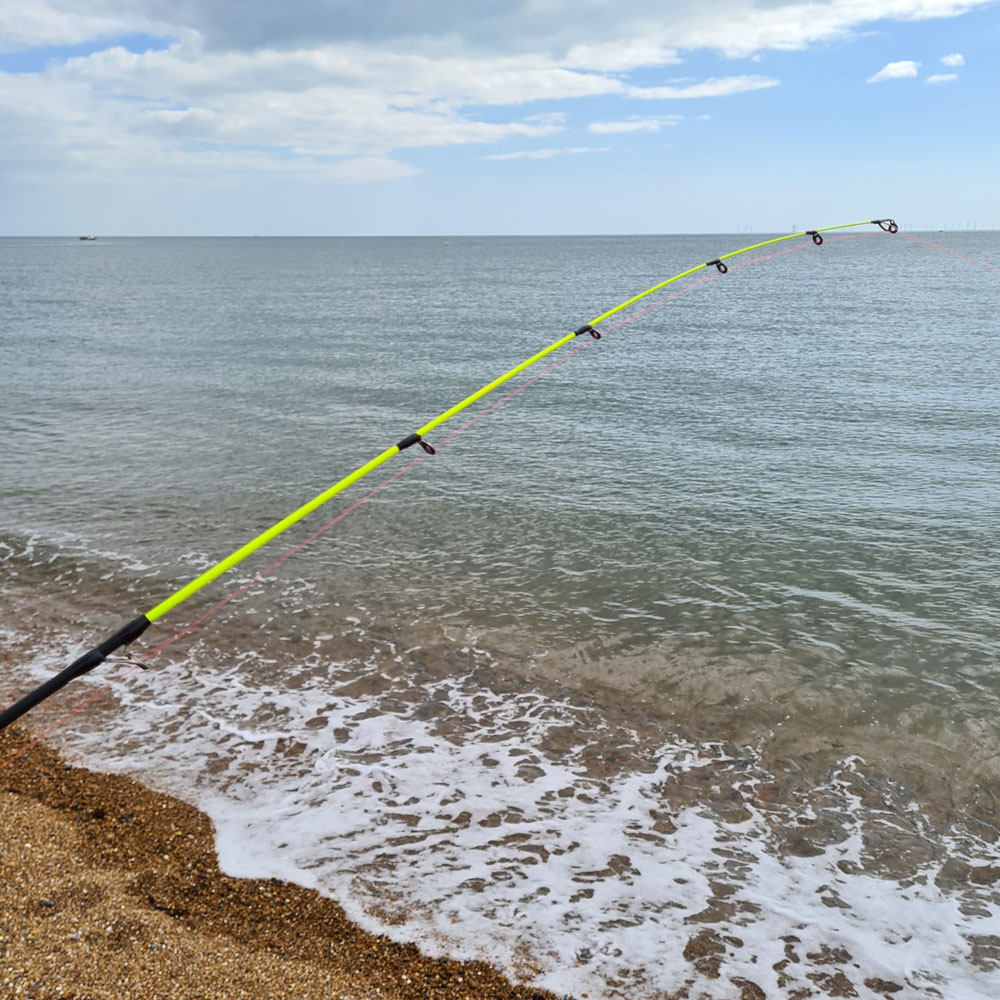
Reels
Match the bass rod to a 6500 sized multiplier reel with a line capacity of around 275-yards of 15lb mono line. This creates a balanced outfit that is light enough to be held all the time if you prefer to instantly feel prospective bites.
For the longer 12ft multi-tip rod, a fixed spool reel in the 4000/5000 sizing holding 250 to 300-yards of 12 to 15lb mono again creates a balanced combination. This combo is more likely to be used in a rod rest, watching the tip for bites.

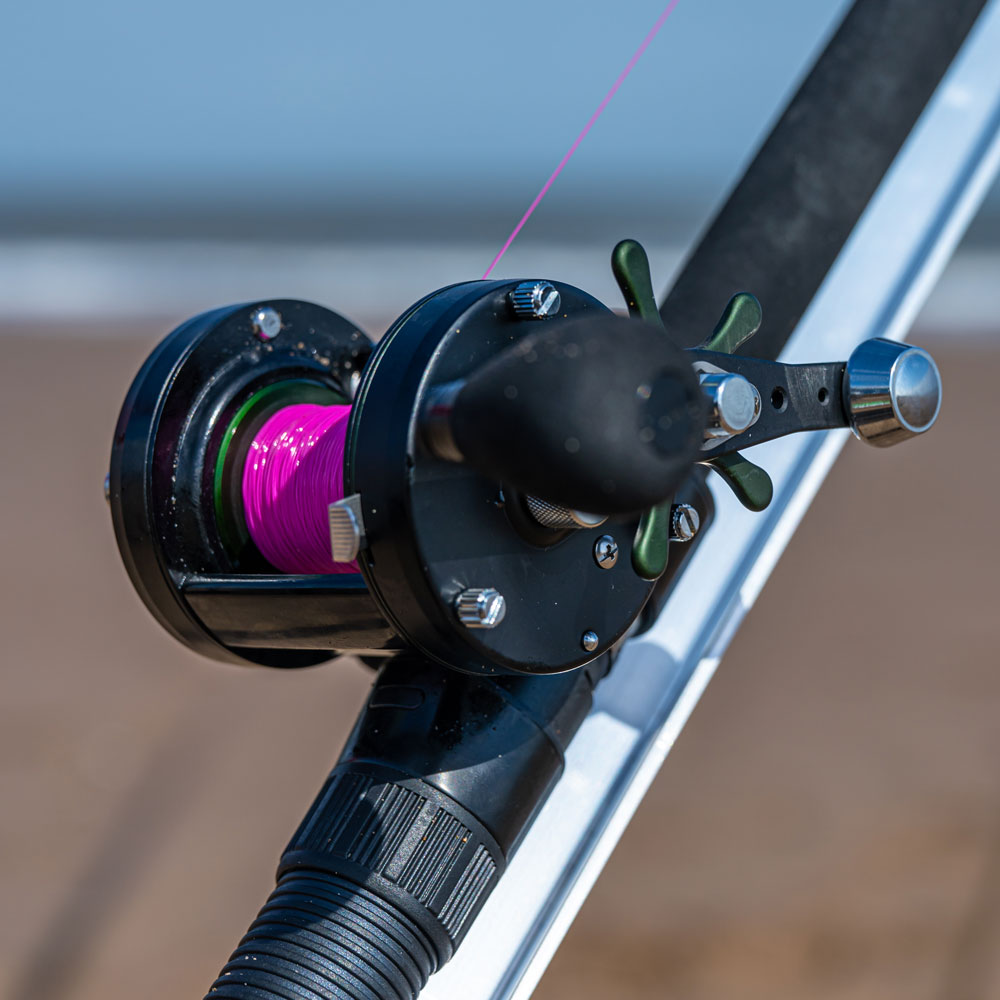
Mainline and Leader
12 to 15lb clear mono is the choice for use on the multiplier reel and add a clear mono shock leader. This needs to be long enough to have 8 turns of line around the spool, run up the length of the rod, and with a 2ft drop of free line beyond the rod tip. At this length, it takes all the casting pressure off the mainline, with the leader knot passing easily through the rod rings.
Load the fixed spool reels with 20lb braid main line and add a 30 to 40lb braid leader. The fine diameter 20lb braid will cast a long way even with the lighter 2oz leads, plus it gives better bite indication as it has minimal stretch.

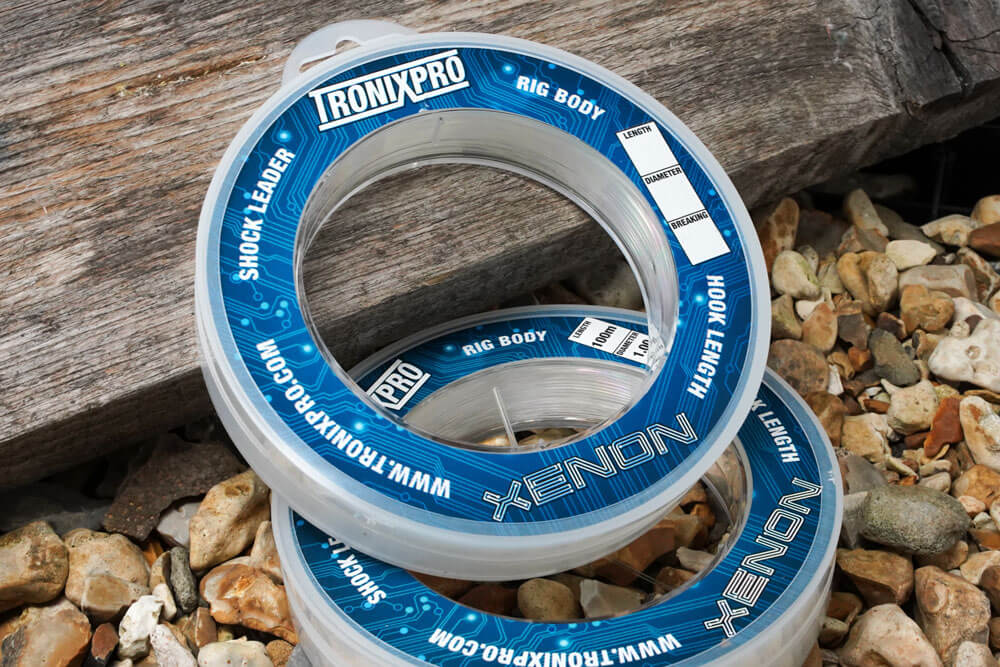
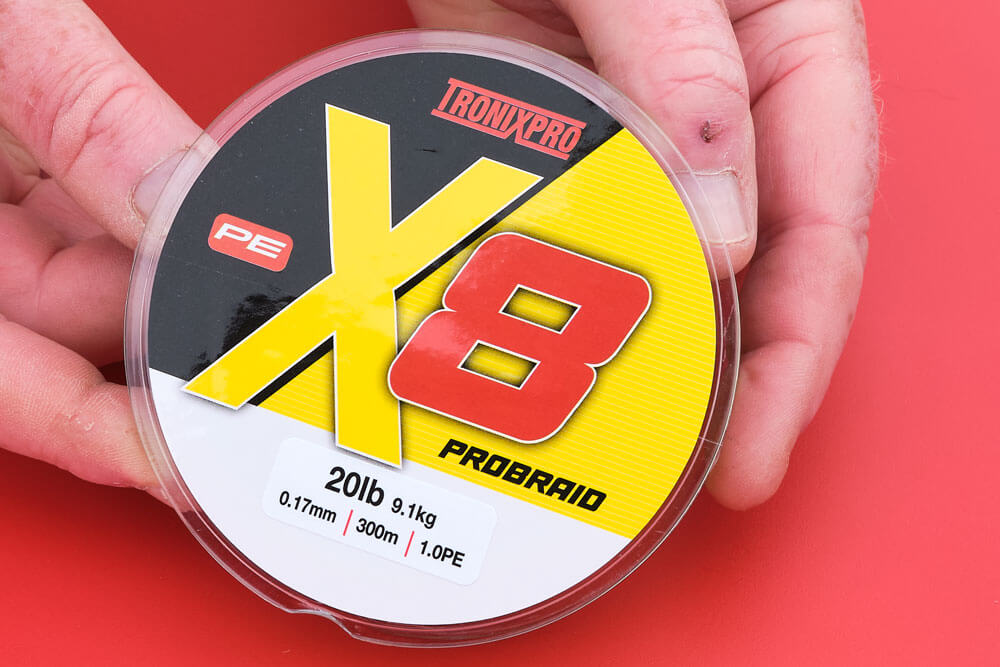
Rigs
In estuaries, a simple 1-hook sliding ledger rig is effective as it features a longer flowing hook length which will move the bait gently in the tide. It also works well in a very gentle surf in shallow water. Movement is attractive to the inquisitive flounder, so have both the baits scent and the movement working in your favour.
- Pass the end of the leader through the swivel eye of a safety snap swivel.
- Slide on a size 5 mm plastic bead.
- Tie the end of the leader to one eye of a size 6 rolling swivel.
- To the remaining eye of the size 6 swivel tie on 24-inches of 15 to 20lb Fluorocarbon line or clear mono to form the hook length.
- Tie on a size 2 Aberdeen pattern hook.
- Attach the lead to the snap link on the safety snap swivel.
This creates a rig that has the lead weight sliding freely on the leader. It gives a direct link between the baited hook and the rod tip and for short to medium range fishing inside estuary channels and offers excellent bite indication. The free-flowing hook length also allows the flounder the room to intercept and fully take in the bait before moving away.
For open surf fishing, a 1 Down/1 Up 2-hook rig casts well. It also presents two baits differently, the lower one being hard on the seabed, and the top hook allows the bait to bounce up off the seabed more when a wave passes overhead. Though the longer lower hook length tends to take the most flounder, the top hook, on its day, can add fish you wouldn’t otherwise get.
- Begin with a 36-inch length of 60lb clear mono.
- Pass the end of the 60lb mono through the swivel eye of a safety snap swivel.
- Slide on a size 5 mm plastic bead.
- Tie the end of the 60lb mono to one eye of a size 6 rolling swivel.
- To the remaining eye of the size 6 swivel tie on 16-inches of 15 to 20lb Fluorocarbon line or clear mono to form the hook length.
- Onto the free tag end of 60lb mono, slide on a rig crimp, 3 mm rig bead, size 6 rolling swivel, another 3 mm bead and another rig crimp. Leave these loose for now.
- To the tag end of 60lb mono tie on a size 4 rolling swivel.
- Crimp the crimp, beads and swivel assembly in place 2-inches below the top size 4 swivel. 8: The top hook length is 15-inches of 15/20lb Fluorocarbon or clear mono with a size 2 Aberdeen hook.
The Aberdeen pattern hooks are best with most baits, especially worm, but if you use small chunks of peeler crab, a change to a short shank wide gape hook produces improved bait presentation.
- Tronixpro Safety Snap Link
- Tronixpro Rolling Swivels
- Tronixpro Rig Beads
- Tronixpro Rig Crimps
- Tronixpro Xenon Leader
- Tronixpro Fluorocarbon Hard
- Tronixpro Aberdeen Hooks
- Tronixpro T14 Crab Hooks
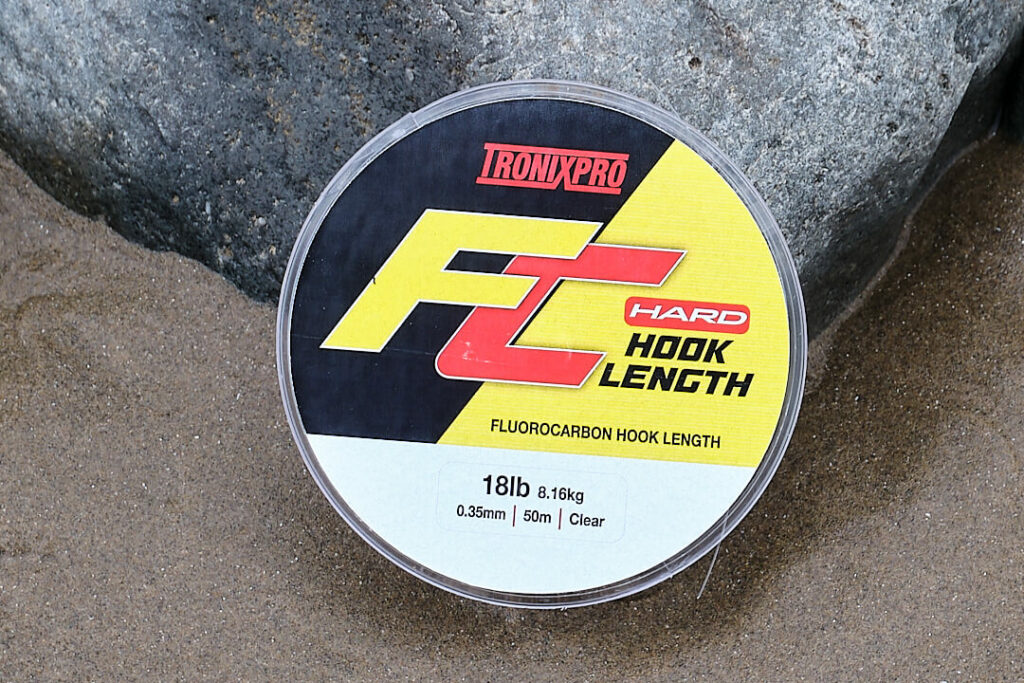
Visual Attractions
In clear water, flounder can be attracted by colour, especially if there is some bait movement in the tide. This can be achieved by sliding three or four 3 mm to 5 mm coloured beads onto the hook length just above the hook.
Use alternate-coloured beads to exaggerate the colours. Good colour combinations for flounder are red and yellow, yellow and black and yellow and green. Another thing to try is a sequence of luminous green and pink oval beads. The latter works well if the sea is carrying some colour after recent rougher seas, or in estuaries where mud and silt can slightly colour the water.

Leads
Most anglers use release wired leads between 2 and 3ozs and tighten the line to the lead until the rod tip just pulls over. This is the best way to see bites. If it’s very calm with light waves and little wind, use a rod rest and have the rod tip parallel to the sea with the rod tip as low as you can get it. This sees the line at a direct 90-degree angle to the sea and helps highlight gentle bites.
When flounder bites are slow to show, a plain bomb weight allowed to slowly pull round with the waves or tidal current will cover a lot more ground. This allows your rig to seek the little pockets of deeper water or undulating ground that flounder like. If you cast out at a slight downtide angle from where you’re standing, then tighten the line, gradually the tide or wave pressure on the line will pull the lead round in an inwards arc back towards shore. You can see on the rod the constant trembles as the weight rolls over the rippled sand. When a flounder intercepts the bait, this obviously stops, you’ll see a series of short rattles or tugs on the rod tip and the slack line slightly lift. Wait until the rod tip pulls fully over as the flounder makes off with the bait before striking.
Leads are available in luminous colours too, and these can be used both as a means of anchoring or semi anchoring the bait but add that often important visual attraction. Good colours to try for flounder are Glow White, Glow Yellow, Glow Green and Glow Pink. You’ll need to experiment on the day to see what colours work best, but this can be a real edge. These lumo leads are good by day, but especially effective at night.
- Shorecast Gripaway
- Shorecast Pear Leads
- Shorecast Medium Tail Beach Bomb
Baits
Fresh blow lug is a deadly bait for flounder, just one or two on the hook is enough. Thread the worm tail first over the hook point and up the shank to position the juicy head end at the hook point. Small sections of black lug work, as will sections of ragworm. Hooking a small ragworm just by the head end and letting the tail wriggle can be deadly when the flounder are shy biting.
Small maddie or harbour rag fished as a bunch of 4 or 5 on a small size 6 hook is again deadly in flat calm seas and in quieter shallow estuary creeks with a light tidal flow.
Small chunks of peeler crab body with the shell removed, the size of a 10p, are excellent in all situations, but especially so inside estuaries. Bind these on with Baitex aiming to just hide the hook.
All the shellfish such as cockle, mussel, sand clams and especially razorfish are all good flounder baits, these being best after a rougher sea when these have been naturally washing up broken and battered by the big waves.
Probably the most underrated flounder bait is mackerel. This is excellent throughout the year. Cut this as a strip about 1.5-inches long and either nick it once onto the hook point so it flutters in the tide or bind it on gently with fine bait elastic.
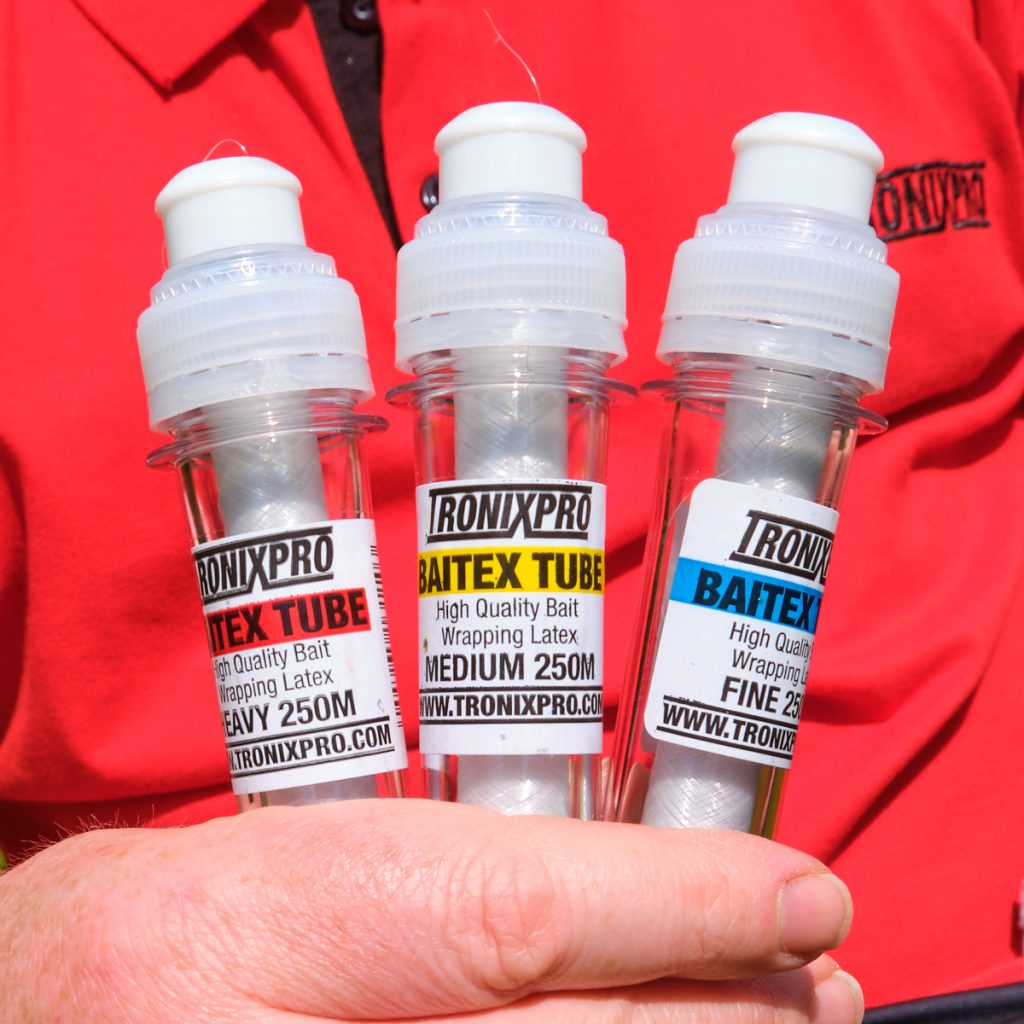
Rod Rest or Sand Spike?
Flounder fishing can be a waiting game, so being able to support the rod rest without holding it makes sense most of the time. A rod rest is the most versatile and allows the rod to be positioned at varied angles to maximise bite detection, or to fish two rods.
However, a sand spike is useful when fishing one rod, say when casting out into a wider main estuary channel, or when walking and casting at intervals along an open surf beach. This cast then walk on approach is a good way to locate small pockets of localised fish but requires minimal tackle and full mobility, which the sand spike encourages.
